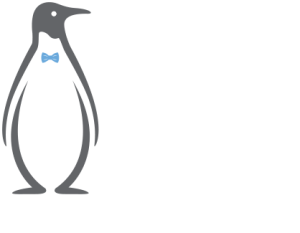
People with visual impairments face an enormous set of challenges getting from point A to point B independently, particularly when using mass transit.
If an environment is not suited with the proper audio guidance or clear visual safety warnings, it can be an unnecessarily dangerous journey.
Just one of the many safety concerns is the open space between train cars when they are at a station stop with level-boarding platforms. The gap between the train cars can easily be confused for a doorway, creating a perilous opportunity for a passenger to fall between the cars and onto the track bed.
After several incidences of people falling between train cars onto the track bed, the Federal Transit Authority (FTA) posted new regulations effective Nov. 4, 2015 in compliance with the Americans with Disabilities Act (ADA) of 1992:
49 CFR (Code of Federal Regulations) § 38.63 Between-car Barriers:
(a) Requirement. Suitable devices or systems shall be provided to prevent, deter or warn individuals from inadvertently stepping off the platform between cars. Acceptable solutions include, but are not limited to, pantograph gates, chains, motion detectors or similar devices.
(b) Exception. Between-car barriers are not required where platform screens are provided which close off the platform edge and open only when trains are correctly aligned with the doors.
Compliance with ADA Act requirements and FTA policy is a condition of receiving Federal financial assistance.3 These relatively new regulations are an example of how agencies are aiming to make a safer voyage for all passengers.
Are these regulations enough?
According to the World Health Organization, “globally, at least 2.2 billion people have a near or distance vision impairment… The majority of people with vision impairment and blindness are over the age of 50 years.”3
The general mandate to put a barrier of some sort to block the gap between rail cars is a great first step. However, by not providing full specifications, a new problem has been created: inconsistency. Rail companies have developed their own solutions with no industry standardization. Some even have variations among different fleets.
While each solution may be deemed compliant, it has resulted in an unexpected experience across rail systems. Consistency sets expectations for passengers with disabilities and is necessary when developing a safest standards.
“For a significant number of visually impaired and blind persons, public transport plays an important role in productivity, community involvement and independence, since it may be the sole viable mobility option to seek education, work, medical care, food and many other venues in their community.”1
What do the DOT ADA regulations for rail vehicles require?1
- Accessible railcars
- Means for wheelchair users to board
- Clear path for wheelchair user in railcar
- Wheelchair space
- Handrails and stanchions that do not create barriers for wheelchair users
- Public address systems
- Between-Car Barriers
- Accessible restrooms if restrooms are provided for passengers in commuter and intercity cars
- Additional mode-specific requirements for thresholds, steps, floor surfaces, lighting, accessible seating signage
Standardizing On-Car BCBs.
Travelers who are blind or have visual impairments use a cane in different ways to detect obstacles in their path. The preferred technique is the Constant Contact method, in which obstacles or elevation changes are detected at every point in the swing of the cane arc. Alternatively, in the Standard Method, the cane is just 1-2” off the ground at the center of the arc. This must be considered when standardizing and specifying Between-car Barriers.
Inconsistencies in current, compliant on-car BCB solutions must be reviewed for efficacy and standardized in order to create a universal solution that keeps everyone safe.
We call on regulators to standardize on-car BCB specifications with the following considerations*:
- Maximum distance from the train floor to the bottom of the barrier must not exceed 3” high or 6-8” away from the platform edge to properly inform cane users of the barrier.
- The top of the barrier should be level with an average person’s shoulder height or 5’ high from the train floor.
- If using several single line barriers, a middle one should be evenly placed between the top and bottom barriers.
- A standard, bright color or contrasting pattern should be used.
- Acceptable, fail-safe materials should be required.
Many transit organizations are migrating towards a solution that has been proven to be effective.
Originally developed for Siemens (San Fran Muni) and Valley Metro, the RETRACTA-BELT® BCB412 Series is a specialized barrier designed specifically for Between-car Barrier applications. Thicker belt webbing, a stronger internal spring and metal components in critical wear and breakage points are just a few upgrades to meet the heavy requirements of constant outdoor rail transit.
The solution has been tested and deployed over the past five years among various mass transit authorities such as Hudson-Bergen and Metro Houston. The BCB412 has proven itself as a preferred and affordable on-car BCB solution among our transit customers and is being utilized for both retrofit and new construction applications.
“We tried (a) platform solution but we had a variation in (the set of locomotive cars) spacing which made it not feasible,” said Michael Bogonvich, MetroRail Vehicle Engineer for Metro Houston/Siemens. “Visiontron was very easy to work with, developing and producing a product to our specifications.”
Visiontron has been a US manufacturer of standard and custom people guidance products for 50+ years. With our talented team of engineers and on-site manufacturing capabilities, we can quickly customize a wide range of crowd control solutions for airports, venues, retailers and more. From slight adjustments to complete new concepts we are here to help.



Configure and customize our BCB412 RETRACTA-BELT® to work for your application.
Visiontron — The People Guidance Pros
We at Visiontron believe it’s our job to enhance each and every person’s experience. From small retail stores to the world’s busiest airports, our products and solutions are there to help people get the most from their time with you. Need help selecting the right products for your application? Get in touch with a People Guidance Pro today at 631-582-8600.
*The specification standardizations for consideration are based on our opinion from conducted research and are not in any way associated with the FTA regulations or ADA Act.
RESOURCES
1. “Assisting Visually Impaired People in the Public Transport System through RF-Communication and Embedded Systems” Published 3/14/2019, Sensors, PMC
2. “Information and Technical Assistance on the Americans with Disabilities Act” United States Department of Justice, Civil Rights Division
3. “49 CFR 27.19 – Compliance with Americans with Disabilities Act requirements and FTA policy.”
4. “Blindness and Vision Impairment” Fact Sheet, 2/26/2021, World Health Organization






